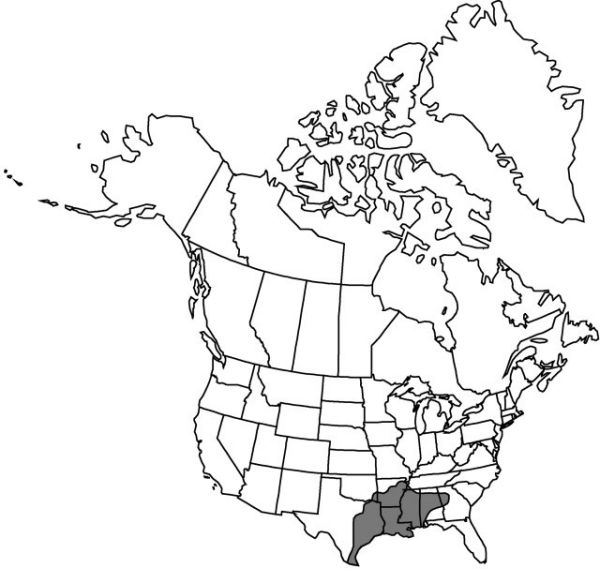Sisyrinchium langloisii
Pittonia 4: 32. 1899.
Herbs, perennial, cespitose, olive to bronze-olive when dry, to 3.2 dm, not glaucous. Stems branched, with 1 or 2 nodes, often purplish, 0.5–2(–2.2) mm wide, glabrous, margins entire to denticulate, similar in color and texture to stem body; first internode 3.2–7.2 cm, usually shorter than leaves; distalmost node with 1–3 branches. Leaf blades glabrous, bases not persistent in fibrous tufts. Inflorescences borne singly; spathes purplish-tinged basally and sometimes along margins, obviously wider than supporting branch, glabrous, keels entire to occasionally denticulate; outer 12.5–25 mm, 0.9–2.7 mm longer than inner, tapering evenly towards apex, margins basally connate 2.2–3.8(–5) mm; inner with keel evenly curved or straight, hyaline margins 0.2–0.4 mm wide, apex acuminate to acute or occasionally obtuse, ending 0–1.5 mm proximal to green apex. Flowers: tepals pale blue to bluish violet or white, bases yellow; outer tepals 6.1–10 mm, apex rounded to truncate, aristate; filaments connate ± entirely, glabrous or sparsely stipitate-glandular basally; ovary similar in color to foliage. Capsules medium brown to black, ± globose, 3.1–4.7 mm; pedicel spreading or ascending. Seeds globose to obconic, lacking obvious depression, 0.9–1.1 mm, rugulose. 2n = 32.
Phenology: Flowering spring.
Habitat: Moist prairies, roadsides, open woods
Elevation: 0–200 m
Distribution

Ala., Ark., Ga., La., Miss., Okla., Tenn., Tex.
Discussion
Sisyrinchium implicatum E. P. Bicknell probably belongs here; the type (Hilgard s.n., Apr 1858, Calhoun Co., Mississippi, MO) was not seen.
Sisyrinchium langloisii is to be expected in northeastern Mexico.
Selected References
None.